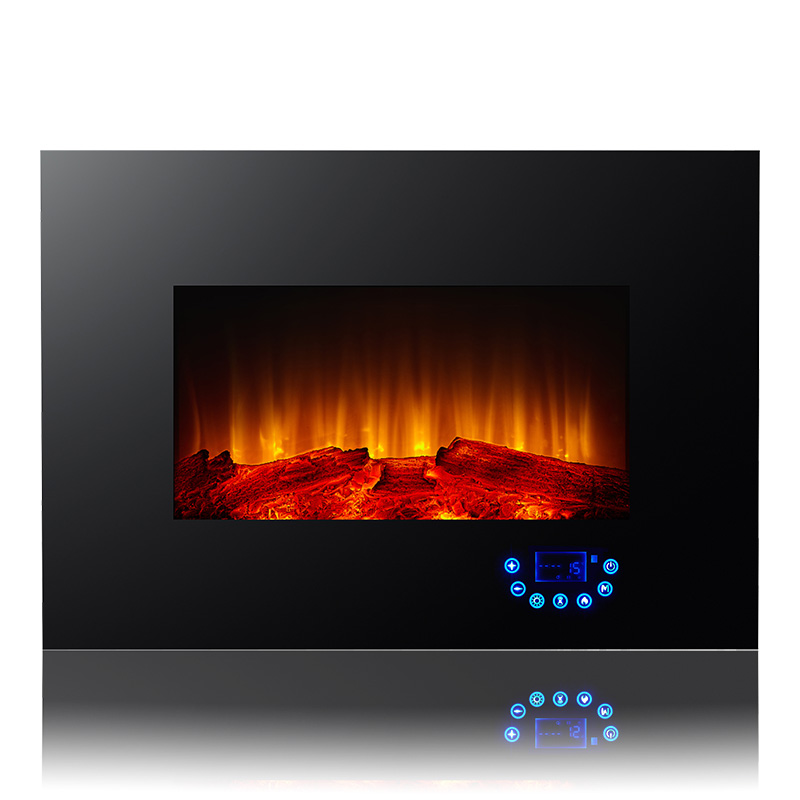Recessed fireplace heaters incorporate various heat distribution mechanisms to ensure even heating throughout the room. Here are some common methods they use:
1.Built-in Fans:
Recessed fireplace heaters often feature built-in fans or blowers, typically located near the heat source. These fans draw in cool air from the room and then blow it over the heating element or heat exchanger.
As the air passes over the heating element, it gets warmed up and is then propelled back into the room. This circulation helps to distribute warm air throughout the space efficiently and evenly.
These fans are designed to operate quietly to avoid disrupting the ambiance of the room.
2.Convection:
Convection is a fundamental heat distribution mechanism in recessed fireplace heaters. As the heater generates warmth, the heated air near the fireplace becomes less dense and rises.
As the warm air rises, it creates a gentle circulation pattern, drawing in cooler air from the surrounding area. This process continues, creating a natural convection current that spreads heat throughout the room.
Convection is particularly effective in achieving uniform heating in spaces with proper airflow.
3.Radiation:
While convection is the primary mode of heat distribution, recessed fireplace heaters also emit radiant heat. The flames and heating elements emit infrared radiation that directly heats objects and surfaces in its path.
Radiant heat is especially beneficial for creating a cozy and comfortable atmosphere in the immediate vicinity of the fireplace. It provides a pleasant warmth that is similar to the feeling of sitting by a traditional wood-burning fire.
4.Thermostats and Temperature Sensors:
Many modern recessed fireplace heaters come equipped with thermostats and temperature sensors. These components continuously monitor the room's temperature.
When the room reaches the desired temperature, the heater can adjust its heat output or turn off temporarily to prevent overheating. This feature helps maintain a consistent and comfortable temperature throughout the space.
5.Variable Flame and Heat Settings:
Some recessed fireplace heaters allow users to adjust the flame intensity and heat output according to their preferences.
By providing variable settings, users can fine-tune the amount of heat generated, ensuring that the room doesn't get too hot or too cold.
6.Blower Directional Controls:
Advanced models may offer directional controls for the built-in blowers. Users can adjust the direction in which warm air is distributed.
This directional control allows homeowners to target specific areas of the room or redirect warm air away from sensitive objects or materials.
7.Heat Diffusers and Grills:
The design of the fireplace surround and mantel can incorporate heat diffusers and grills. These components are strategically placed to help disperse warm air evenly into the room.
Heat diffusers and grills are designed to spread warm air in multiple directions, preventing localized hot spots and ensuring that the entire room receives adequate heating.
8.Heat-Retaining Materials:
The materials used in the construction of the fireplace surround can also impact heat distribution. Materials like stone, ceramic, or brick have excellent heat-retaining properties.
These materials absorb heat from the fireplace and release it slowly into the room, contributing to a more consistent temperature and longer-lasting warmth.
9.Zoned Heating:
In larger spaces or open-concept areas, homeowners may choose to install multiple recessed fireplace heaters in different locations.
This zoning approach allows for precise control of heating in various areas of the room, ensuring that each zone maintains a comfortable and even temperature.
26" wall mounted fireplace with log set flame effect
Two levels heating functions
Five levels flame brightness adjustment
Operated with remote control and touch screen control
6 present operating modes
Temperature setting function
With LED light source flame technology






